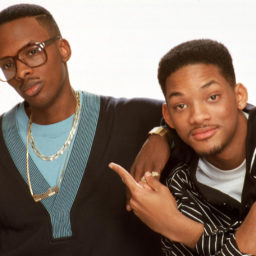The digital age is demanding for artists. Simply releasing audio is often not enough. You have to take care of artwork, video material for Instagram, YouTube, and Facebook, and then you still have to figure out how to get people to actually pay you.
The time has come for a new band member – even if you’re just a bedroom producer. That band member is the visual artist.
The case I’m making is not new. It has happened before. On a tremendous scale. Back in the early days of hiphop, DJs needed MCs to hype up the crowd. As MCs moved center stage, they needed DJs to keep their shows dynamic, so these two different disciplines combined and allied. It was necessary for the format of that day.

The format of this day is audiovisual. It needs to compete in feeds, it needs to stop people from scrolling, and has to get them to unmute the video in order to hear your music.
Like the DJ and MC in the 1980s, the musician and the visual artist face similar problems today:
- You need to get your work in front of people’s eyes;
- And, outside of certain well-established business models, it’s challenging to monetize.
For the visual artist, you are usually the client, not the people who watch the final work. So they’re used to be commissioned to create their art. It’s you who monetizes the live performance and the recording. Teaming up creates the possibility to do both, together, like for brands.
Advantage #1: combining business models generates new revenue streams for the musician and the visual artist.
But before the business model comes getting your work under a lot of eyes. That requires honing your skills plus defining and refining your style. This can be challenging by yourself, but in partnership you can work off of each other. Instead of stepping in when a big part of the creative product is already finished, the visual artist can be involved in the creative process from the beginning. This has the effect that the music and video are integrated elements of the same work, rather than two separate works, and over time, the symbiosis between the artists develops further.
Advantage #2: music and video are interwoven elements, rather than separate works made at different points in time.
Advantage #3: the creative product is a new container uniquely suited for, and born out of, the digital landscape.
The song, as we know it, came from the record. We’re still thinking in songs, but it has lost its novelty as a format. While audio-only music is obviously not going anywhere, the most engaging material on social networks right now is video. Moving image is powerful — it took a while for video to take over the web, but with growing data caps, increasing network speeds, and great cameras and screens on our mobile devices, video has finally conquered the web.
What is also not going away is the live experience. In fact, it’s one of the most important revenue sources. Engaging live shows are hard if you’re a solo musician. If you’re a band, they’re tricky in terms of logistics, and possibly costly.
If you can do a live show with just 1 or 2 people the economics are much better. Bringing not just your own music, but also your own visuals that extend from the experience you provide on your site, your album artwork, and your audiovisual experiences on YouTube, Instagram, and other social media.
You should actually be able to charge a bit more for your bookings, because of this show element.
Advantage #4: the economics for live are better, and you get to offer a very integrated experience to fans.
Advantage #5: it gives a live, real-world experience to the visuals — which is something that may be trickier to achieve if the visual artist were on their own.
For some good examples of artist collectives who strongly emphasise this audiovisual fusion, check out NAAFI, ZZK Records, NON, and Meneo:
